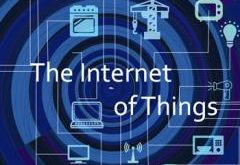Michael Hollins, head of Warmup’s Smart Devices division looks at why most smart thermostats currently on the market are getting a lukewarm reception from consumers and why this will only change once these devices ‘work like magic’.
When investing in new technology, consumers are looking for innovation that simplifies day-to-day life. Smart home technology is now far more than controlling lights, alarms, or heating in the home via an app on a smartphone. There is a rejection of so-called smart thermostats for this reason.
Purchasing a smart home product usually begins with the consumer researching its benefits and asking the question, ‘How will this technology make life easier for me?’ When looking for a smart thermostat, there are three key factors of importance to the user.
1. The house should always be at a comfortable temperature.
2. Energy bills should be as low as possible.
3. The technology allows heating control with minimal effort.
Most smart thermostats currently on the market promise to simplify heating control with occupancy sensing and geo-fencing being key features. Although excellent in theory, these features do not function as a way of accurately predicting user behaviours. This is because they only look at one set of data. Occupancy sensing looks at time and likelihood, while geo-fencing considers only location.
Occupancy sensing makes predictions based on heating usage habits. However, these predictions have limitations. For example, you come home from work at 5.00pm every day, your house will be warm when you get in. However, what happens if you finish work early and return home at 2pm one day?
With geo-fencing, various pre-set parameters tell your thermostat how far away you are from home. The closer you get, the warmer your home becomes, with the aim of reaching your desired temperature just as you arrive home. However, what happens if you work close to home? Your home is heated all day, because it thinks you’ll be returning soon.
What the mass market desires is for technology to create something beyond comprehension. A product that sits in your home and carries out a menial, but important task, with no effort required from the user.
Warmup recognised the need to contextualise the time and location data used by features like occupancy sensing and geo-fencing. It has the unique benefit of drawing on data insight from its ten years of research and development, and this allowed the firm to develop the 4iE Smart WiFi Thermostat.
The technology takes into account the likelihood that you will be doing something, and combines it with what you are actually doing. This eliminates the requirement for users to override their thermostat if the regular usage pattern changes.
At their current level most smart thermostats are only suitable for early adopters who are interested in technology for the sake of technology.
Being sold a smart thermostat on the basis that you never have to touch it again, but having to override it any time you step outside of a set usage pattern, does not offer a true automated experience.
For smart thermostats to be desirable to the mass market they need to work as if like magic.
 PCR Tech and IT retail, distribution and vendor news
PCR Tech and IT retail, distribution and vendor news




